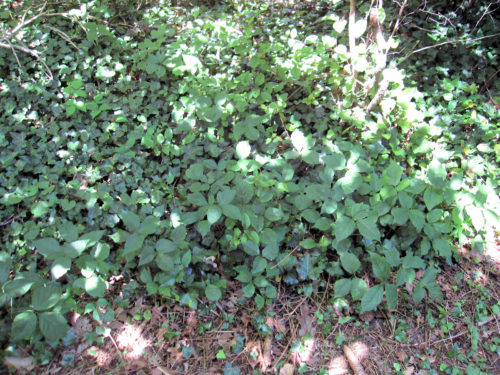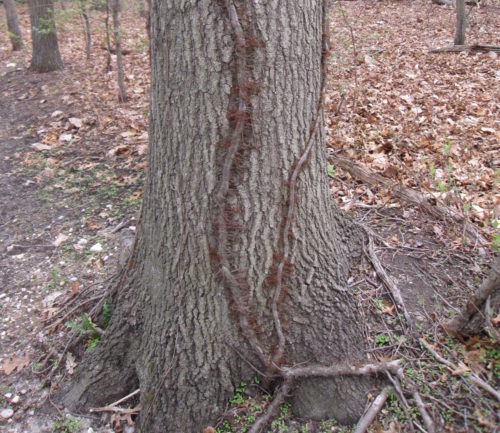Hover over images for detail:

Most people recognize the three leaves of poison ivy. If you need a reminder, google search the name with “images” to see hundreds of photos.

This picture was taken in winter. Here you’ll see root hairs that attach the vine to the tree but no leaves, since poison ivy is deciduous. English or common ivy is evergreen, and also produces root hairs as the vine matures but leaves are present yearlong. Notice that the vine is starting to encircle the foot of the tree. Carefully cut it with a limb saw, remove and dispose of this portion and extract as much of the root as possible.

While poison ivy is native to Long Island, with climate change poison ivy is exploding throughout the Northeast, as described in NPR’s story “Why Poison Ivy Loves Climate Change”. By May the new growth may be two to three feet tall with three small red leaflets at the top. This is the time to remove the tall vines and runners.
